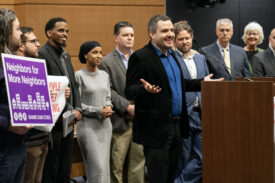Hey, look! Someone else cares about the link between neighborhood design and public health!
The Congress for the New Urbanism put out a big ol’ report, covering a lot of the same ground we went over in our most recent Cascadia Scorecard. The upshot—there are a bajillion ways that neighborhood design might affect people’s health; some of the connections are rock solid, while others are more speculative; and the big pathway for protecting health is through reduced vehicle travel—which can ease car accidents and air pollution, while promoting exercise.
The neat thing here, though, is that the report was prepared specifically to help the green building community—real estate developers, designers, architects, etc.—figure out how to create neighborhoods that protect their residents’ health.
Which is a big step forward. Gradually, the academic research on the links between sprawl and health is being turned into practical lessons for the design world. And that should mean that, soon enough, we’ll start seeing some progress in making neighborhoods healthier places to live.








